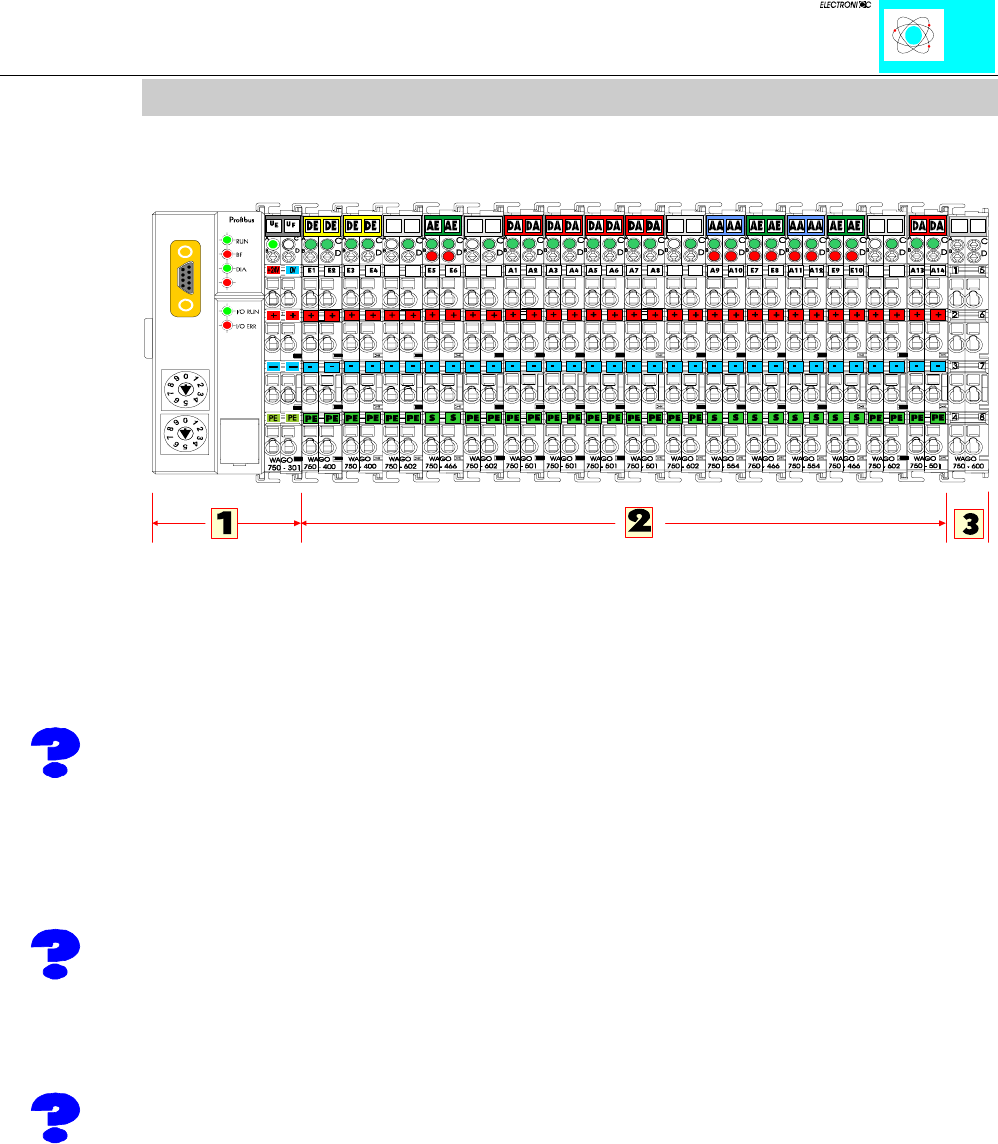
Interbus / Introduction
:$*2Ç,2Ç6<67(0
1
1 The WAGO I/O System
The WAGO I/O SYSTEM consists of various components which are capable of
providing modular and application specific fieldbus nodes for various fieldbusses.
I11.1 Setting up a fieldbus node with the WAGO I/O SYSTEM
General remark:
A fieldbus node consists in principle of a fieldbus coupler at the front end, a number of
special function modules and a termination module which is placed at the other end.
1 - Buscoupler
The Buscoupler forms the link between the fieldbus and the field devices with their I/O
functions. All control functions required for the faultless operation of the I/O functions
are carried out by the coupler. The connection to different fieldbus systems is
established by each of the corresponding Buscouplers, e.g. for PROFIBUS, INTERBUS
S, II/O LIGHTBUS, CAN, ModBus etc. In this way a change of the fieldbus system is
possible.
2 - Function modules
In the function modules, the incoming process data ais converted. Corresponding to the
different requirements, special function modules are available for a variety of functions.
There are digital and analog inputs and outputs and modules for special functions. The
modules are described in the following chapters.
3 - Termination module
A termination module is needed for faultless operation of the node. The termination
module is always placed as the last module in order to obtain a termination of the
fieldbus node. This module has no I/O function.


















